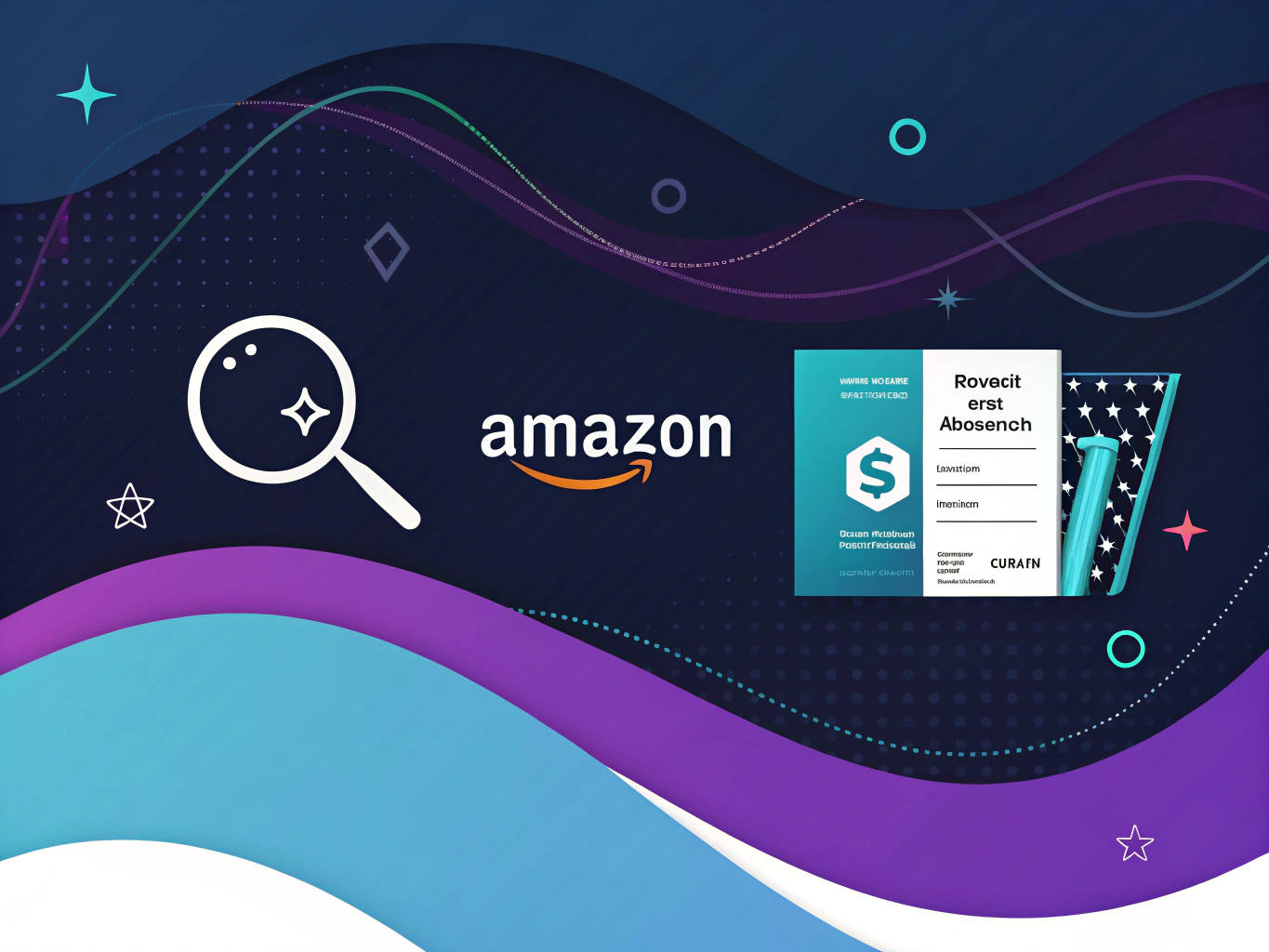Understanding Amazon’s FBA Reimbursement Framework in 2024
Let’s be honest – Amazon’s FBA reimbursement system has always been a bit like trying to decode ancient hieroglyphics while riding a unicycle. Just when sellers think they’ve got it figured out, Amazon throws a curveball that sends everyone scrambling to understand the new rules of the game.

And now, with the massive policy changes rolling out between October 2024 and March 2025, the landscape is shifting dramatically. We’re talking about fundamental changes to how sellers get reimbursed for lost or damaged inventory – changes that could make or break your profit margins if you’re not paying attention.
What is Amazon FBA Reimbursement? The Basics You Need to Know
At its core, Amazon’s reimbursement policy is meant to be your safety net when things go wrong in the FBA ecosystem. Think of it as insurance for your inventory – except this insurance company has very specific rules about when and how they’ll pay out.
The policy covers everything from lost shipments to damaged inventory, but here’s the kicker: Amazon’s putting a $5,000 cap on reimbursements per unit. For most sellers, this won’t be an issue. But if you’re dealing in high-ticket items, you might want to grab a calculator and do some risk assessment.
The 2024-2025 Policy Changes Timeline: What’s Coming and When
October 2024 is bringing the first major shake-up: the claim window is shrinking from 18 months to just 60 days. That’s like going from having a semester to complete your homework to having it due tomorrow. Sellers who’ve been sitting on potential claims? They’re about to lose up to 16 months of reimbursement opportunities.
Then November 2024 rolls in with automated reimbursement rollout. Finally, some good news! Amazon’s systems will automatically detect and reimburse for lost inventory in fulfillment centers. But don’t get too comfortable – automation isn’t perfect, and you’ll still need to keep your eyes peeled for discrepancies.
Types of Amazon Reimbursement Claims You Need to Know About

Inventory-Related Claims: The Big Three
Lost or damaged inventory in fulfillment centers is probably the most common claim type you’ll deal with. It’s like sending your kid to summer camp – sometimes things just… disappear. But unlike summer camp, Amazon’s actually responsible for replacing what gets lost.
Missing inbound shipments are another headache altogether. You know those moments when your tracking shows “delivered” but Amazon says “nope, never saw it”? That’s where these claims come in. And don’t forget about canceled shipment issues – they’re like the ghost in the machine of FBA reimbursements.
Customer Return-Related Claims: The Complex Web
Returns are where things get really interesting (and by interesting, I mean potentially frustrating). You’ve got improperly restocked items, missing returns, and incorrect unsellable classifications. Each of these scenarios is like a different episode of a mystery show, and you’re the detective trying to piece it all together.
The new Returnless Resolution impact is particularly worth noting. If you’re opted into this program, remember: no return means no reimbursement if the item gets refunded. It’s a trade-off between customer satisfaction and potential losses that every seller needs to carefully consider.
Removal Order Claims: The Final Frontier
When you request inventory removal from Amazon’s warehouses, you’re initiating a process that can either go smoothly or… not so much. Lost inventory during removal and damaged items during disposal are common issues that can trigger reimbursement claims.
The documentation requirements here are crucial. Amazon needs proof – and lots of it. Think of it like filing your taxes; the more organized your paperwork, the smoother the process will be.
The New Manufacturing Cost Model: A Game-Changer
March 2025 brings perhaps the biggest change of all: Amazon’s switching to a manufacturing cost-based reimbursement model. Instead of getting reimbursed based on selling price, you’ll get paid based on what it cost to make the product. This is huge, folks – and not necessarily in a good way for many sellers.
Amazon’s going to estimate manufacturing costs based on similar products in their ecosystem, including items from other sellers and wholesale channels. It’s like having your neighbor guess how much you spent on your house renovation – they might be in the ballpark, but they probably won’t hit the exact number.
Here’s where it gets interesting: sellers can provide their own manufacturing cost data. If you’ve got the documentation to prove your costs, you might get better reimbursement rates than letting Amazon guess. But this means keeping detailed records and being ready to share them when needed.
The implications of this change are massive for FBA sellers. Those with high markup products might see significantly lower reimbursements, while those operating on razor-thin margins might actually benefit from more accurate cost calculations.
Types of Eligible Reimbursement Claims: What Amazon Actually Covers

Let’s be real – Amazon’s reimbursement system can feel like navigating a maze blindfolded while juggling chainsaws. I’ve been there, and I’ve got the scars (and recovered funds) to prove it. But here’s the thing: understanding what claims you can actually file is half the battle in getting your money back.
Inventory-Related Claims: When Your Products Pull a Houdini
Remember that feeling when you were a kid and your favorite toy just… vanished? That’s basically what happens in Amazon’s fulfillment centers sometimes. The difference is, now we’re talking about your inventory, and there’s actually a way to get compensated for it.
The amazon reimbursement policy covers several types of inventory disappearing acts:
– Lost or damaged inventory while in fulfillment centers (yes, those massive warehouses aren’t perfect)
– Missing inbound shipments (when your products never make it to their final destination)
– Canceled shipment issues (because sometimes things get weird in transit)
– Items lost during transit (both from you to Amazon and from Amazon to customers)
Customer Return-Related Claims: The “Where Did It Go?” Saga
Here’s where things get interesting – and by interesting, I mean potentially frustrating. The fba reimbursement process for returns is like playing detective, but instead of looking for clues, you’re tracking missing or mishandled returns.
You can file amazon reimbursement claims for:
– Items that customers returned but weren’t properly restocked
– Returns that pulled a disappearing act
– Products incorrectly marked as unsellable (when they’re actually fine)
– Issues related to Amazon’s Returnless Resolution program (which, let’s be honest, can sometimes feel like throwing products into a black hole)
The New Reimbursement Calculation Method: Welcome to the Manufacturing Cost Era
Starting March 2025, Amazon’s switching things up – and it’s a pretty big deal. Instead of reimbursing based on selling price, they’re moving to a manufacturing cost model. Think of it like going from “what could you have sold it for?” to “what did it actually cost you to make?”
How Amazon Estimates Your Manufacturing Costs
Here’s where it gets both fascinating and slightly concerning. Amazon’s using its vast data ocean to estimate manufacturing costs by comparing similar products across their platform. It’s like having an AI accountant who’s really good at averages but might not understand your unique situation.
The fba inventory reimbursement calculation now involves:
– Analysis of similar products in your category
– Data from wholesale channels
– Historical cost information from across Amazon’s marketplace
Providing Your Own Cost Documentation
Here’s a pro tip that could save you thousands: don’t let Amazon guess your costs. You can (and should) provide your own manufacturing cost data. It’s like bringing your receipts to a tax audit – always better to have your own documentation than rely on estimates.
The Automated Reimbursement System: Your New Best Friend (Maybe)

As of November 2024, Amazon’s rolled out automated reimbursements for US sellers. It’s like having a robot accountant working 24/7 to spot discrepancies. But like any automated system, it’s not perfect.
How the Amazon Reimbursement Service Actually Works
The system uses a combination of inventory tracking, sales data, and shipping information to automatically flag issues that deserve reimbursement. Think of it as a highly sophisticated loss prevention system that actually pays you when it finds problems.
Key features of the automated system include:
– Real-time inventory monitoring
– Automatic flagging of discrepancies
– Immediate processing of clear-cut cases
– Integration with your seller metrics
The Manual Claims Process: When Automation Isn’t Enough
Sometimes you need to take matters into your own hands. The amazon seller reimbursement process still allows for manual claims, but there’s a catch – you’ve now got just 60 days to file them. It’s like having a very strict deadline for expense reports, except these could be worth thousands.
To file a successful manual claim:
– Gather all relevant documentation (shipping records, inventory reports, etc.)
– Submit within the new 60-day window
– Follow up regularly (the squeaky wheel gets the grease)
– Keep detailed records of all communications
Performance Monitoring and Success Rates
Here’s something most sellers miss: tracking your reimbursement success rate is crucial. I’ve seen sellers leave thousands on the table simply because they weren’t monitoring their claims’ performance. Set up a simple spreadsheet to track:
– Number of claims filed
– Success rate
– Average processing time
– Total amount recovered
The amazon fba refund reimbursement process isn’t perfect, but it’s a system you can learn to work with effectively. Think of it like learning to play an instrument – at first it seems impossible, but with practice and the right approach, you can make it sing.
Automated Reimbursement System: A Game-Changer for Amazon Sellers
Let’s talk about the elephant in the room – Amazon’s new automated reimbursement system. Starting November 2024, this isn’t just another update; it’s Amazon finally acknowledging what sellers have been screaming about for years. The manual claim process was about as fun as watching paint dry while doing your taxes.
The system’s architecture is actually pretty fascinating (and I say this as someone who’s spent way too many nights debugging ecommerce systems). It uses service workers to continuously monitor inventory discrepancies, kind of like having thousands of tiny accountants working 24/7. The error handling is robust – when it detects an issue, it doesn’t just throw its hands up and quit like the old system did.
Performance Monitoring and Success Rates
Early data shows processing times have dropped from weeks to about 48-72 hours for most cases. Success rates are hovering around 85% – not perfect, but way better than the manual system’s coin-flip odds. The most common hiccups? CAPTCHA verification (because apparently robots need to prove they’re not robots) and occasional processing delays during high-volume periods.
Manual Claims: When You Need to Take the Wheel

Sometimes you’ve gotta do things the old-fashioned way. For manual amazon reimbursement claims, you’ll need:
- Original shipping documentation
- Inventory records
- Cost documentation (especially important with the 2025 manufacturing cost changes)
- Photographic evidence (if applicable)
Pro tip: Keep everything. I mean everything. That random spreadsheet from six months ago? Keep it. That slightly blurry photo of your inventory? Keep it. In the world of amazon seller reimbursement, documentation is your best friend.
Optimization Strategies That Actually Work
Look, I’ve seen enough sellers treat their FBA reimbursement service like a game of chance. But here’s the thing – it’s more like chess. You need a strategy. Start with solid inventory management. Use tracking systems that would make NASA jealous. Document everything like you’re writing the next great American novel.
For claims management, automation is your friend. There are some solid FBA reimbursement tools out there that can track your claims like a hawk. But remember – automation without oversight is like giving your teenager your credit card. Trust, but verify.
Troubleshooting: When Things Go Sideways
Even with the best systems, things break. Server issues? Yep. Processing delays? You bet. The key is knowing how to handle them. When you’re dealing with Amazon FBA refund reimbursement issues, start with Seller Support. Yes, I know – it’s about as fun as a root canal. But document everything. Every. Single. Interaction.
Resolution Channels That Get Results
Here’s my tried-and-true escalation process for amazon fba reimbursement:
- Start with regular Seller Support
- If no resolution in 48 hours, escalate to a supervisor
- Still stuck? Hit up the Seller Forums (seriously, there are some wizards there)
- Final boss level: Submit a Bezos escalation (yes, it’s a real thing)
Future-Proofing Your Amazon Business
The March 2025 manufacturing cost-based reimbursement change is going to shake things up. It’s like Amazon’s saying, “Show me the receipts!” But here’s the opportunity – sellers who adapt early will win big. Start gathering your manufacturing cost data now. Build relationships with your suppliers that include detailed cost breakdowns.
Strategic Considerations for 2025 and Beyond
The amazon reimbursement policy changes aren’t just about paperwork – they’re reshaping how we think about inventory management. Consider this: with the new 60-day claim window, your monitoring systems need to be sharper than ever. It’s not just about catching discrepancies; it’s about catching them fast.
Think of your amazon fba policy compliance like a tech stack – it needs regular updates, maintenance, and sometimes a complete overhaul. Train your team now. Update your SOPs. Get ready for a world where reimbursement is more automated but also more scrutinized.
Final Thoughts: Embracing the Change
Here’s the thing about Amazon’s reimbursement evolution – it’s like any other tech transformation. Sure, there’s going to be some chaos at first. Some sellers will resist, holding onto their manual processes like flip phones in 2024. But the smart ones? They’re already adapting.
Remember when we worried about AI taking over customer service? Now we can’t imagine life without chatbots. The same will be true for automated reimbursements. The key is staying ahead of the curve, keeping detailed records, and understanding that while the system isn’t perfect, it’s getting better.
For sellers wondering how to check Amazon reimbursement status or how long Amazon reimbursement takes, the answers are getting simpler. The system is becoming more transparent, more automated, and ultimately, more seller-friendly. And that’s something worth getting excited about.
The future of Amazon selling isn’t just about having great products – it’s about mastering these backend processes that can make or break your bottom line. So embrace the changes, stay informed, and keep pushing forward. Because in the end, that’s what successful selling on Amazon is all about.
👉👉 Create Photos, Videos & Optimized Content in minutes 👈👈
Related Articles:
Frequently Asked Questions
How does Amazon reimburse?
Amazon reimburses customers by issuing a refund to the original payment method used during the purchase. This process usually occurs after a return has been received and inspected, or if an order was canceled prior to shipping. For sellers, reimbursements may occur due to issues such as lost inventory in Amazon’s warehouse, and these are credited to the seller’s account balance.
How to claim reimbursement from Amazon?
To claim reimbursement from Amazon, customers should first ensure they are eligible under Amazon’s refund policy, then initiate a return or refund request through their Amazon account. For sellers, claims can be made by reviewing their inventory and transaction reports, identifying discrepancies, and submitting a claim through Seller Central. It’s important to provide all necessary documentation and details to support the claim.
Is there a refund policy in Amazon?
Yes, Amazon has a comprehensive refund policy that allows customers to return items within a specified period for a refund. The policy varies depending on the item category and the reason for the return. Generally, items can be returned within 30 days of receipt, and the refund is processed once the item is returned in its original condition.
How long does Amazon reimbursement take?
Amazon typically processes reimbursements within 3 to 5 business days after receiving the returned item. The total time for a refund to reflect in the customer’s account may vary depending on the payment method and the bank’s processing time. For sellers, reimbursements for inventory issues are generally processed within 45 days from the original incident.
How to check Amazon reimbursement?
Customers can check their reimbursement status by logging into their Amazon account and viewing their order history; any refunds will be listed there. For sellers, reimbursements can be checked through Amazon Seller Central by navigating to the payments or reports section, where detailed transaction and reimbursement information is provided. Keeping track of these reports helps ensure all eligible reimbursements have been processed.
About the Author
Vijay Jacob is the founder and chief contributing writer for ProductScope AI focused on storytelling in AI and tech. You can follow him on X and LinkedIn, and ProductScope AI on X and on LinkedIn.
We’re also building a powerful AI Studio for Brands & Creators to sell smarter and faster with AI. With PS Studio you can generate AI Images, AI Videos, Chat and Automate repeat writing with AI Agents that can produce content in your voice and tone all in one place. If you sell on Amazon you can even optimize your Amazon Product Listings or get unique customer insights with PS Optimize.
🎁 Limited time Bonus: I put together an exclusive welcome gift called the “Formula,” which includes all of my free checklists (from SEO to Image Design to content creation at scale), including the top AI agents, and ways to scale your brand & content strategy today. Sign up free to get 200 PS Studio credits on us, and as a bonus, you will receive the “formula” via email as a thank you for your time.
